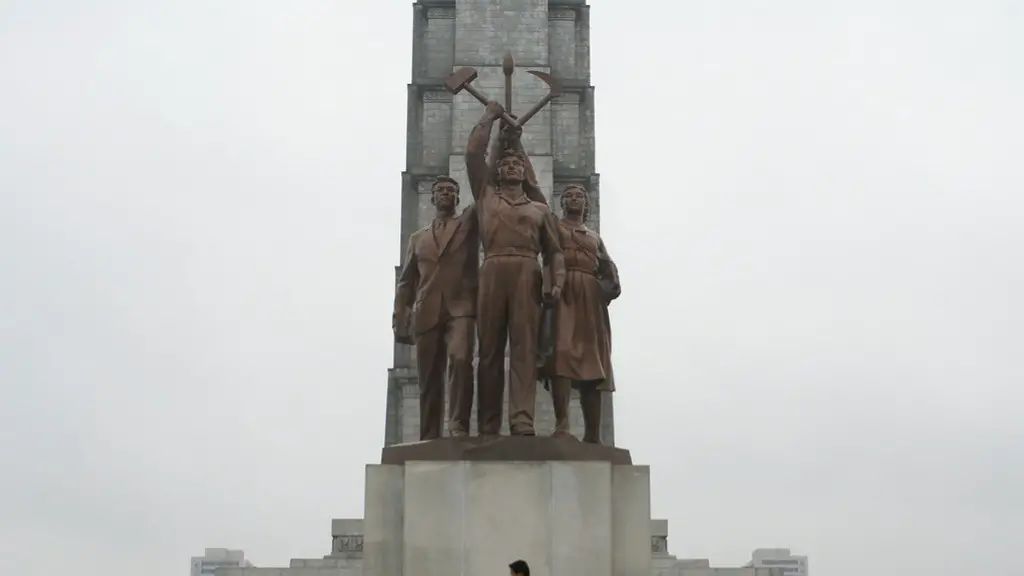Option 1: Diplomacy
Fighting North Korea requires a multi-pronged approach that is both diplomatic and economic. To begin, diplomatic pressure should be applied to North Korea to encourage them to abandon their nuclear weapons and engage in meaningful talks about denuclearization. This pressure could include isolating North Korea internationally, increased trade embargoes, and the establishment of diplomatic relations with other countries. At the same time, it is important to remain open to dialogue and explore the possibility of negotiating a denuclearization agreement with North Korea.
In order to work towards diplomatic progress, the United States and its allies should also explore ways to better understand North Korea’s motives, goals, and capabilities. This could include increased intelligence gathering and establishing a better open communication channel. Additionally, it would be beneficial to have more trusted intermediaries who can bridge dialogue between the two sides.
When discussing the issue of North Korea, it is important to focus not only on the security threat posed by its nuclear and ballistic missile program, but also the human rights abuses and political repression that the North Korean regime perpetrates on its own people. By placing the focus on their oppressive practices, it can act as an incentive for the North Korean government to come to the table for negotiations, as it is in their interest to be seen as a trustworthy partner to the international community.
Option 2: Sanctions
Sanctions provide another method for fighting against North Korea, as they can be used to apply financial pressure on the North Korean regime. Targeted sanctions, such as those imposed by the United Nations Security Council, are designed to limit North Korea’s ability to acquire dual-use materials, luxury goods, and minerals. Additionally, sanctions can be used to deter North Korea from engaging in illicit activities such as money laundering and counterfeiting.
It is important to note that sanctions alone are unlikely to be effective in achieving our goal of denuclearizing North Korea. To be effective, sanctions should be part of a larger diplomatic strategy that would include direct talks with North Korea and incentives for them to abandon their nuclear weapons program. Additionally, any sanctions should be implemented in a way that will minimize their impact on innocent civilians, as the suffering of innocent North Koreans could end up strengthening the government’s grip on the country.
Option 3: Deterrence
Deterrence is another option for fighting against North Korea. Deterrence is based on the principle of mutually assured destruction and is intended to convince North Korea that the costs of attacking the United States or its allies would be too great for it to pursue. To do this, the United States and its allies must maintain a strong conventional military presence in the region and be willing to use military force if necessary.
It is important to note that deterrence alone is not a long-term solution. For deterrence to be effective, the United States and its allies must make North Korea believe that they are prepared to use force if necessary. This means periodically engaging in military exercises and deploying military forces in the region to create a credible threat. Additionally, the United States must continue to engage in diplomatic efforts to resolve the issue and be willing to consider negotiations if North Korea shows a genuine commitment to denuclearization.
Option 4: Humanitarian Aid
Humanitarian aid is one way to fight North Korea by showing the people of North Korea that the United States and its allies are committed to helping them achieve a better quality of life. By providing aid, the United States and its allies can build a more positive relationship with the North Korean people and promote the idea of fostering a peaceful dialogue between North Korea and the rest of the world.
Humanitarian aid is also an important tool in mitigating the consequences of the North Korean regime’s human rights abuses and political repression. In addition to providing food, medicine, and other necessities, humanitarian aid can also support programs that provide education and mental health services to those who need it most.
It is important for the United States and its allies to remember that humanitarian aid is not a substitute for diplomacy and economic pressure. While humanitarian aid can be an effective tool for helping to improve the lives of the North Korean people, it must be part of a larger strategy that includes diplomatic engagement and economic sanctions.
Option 5: Unification
Unification is another option for fighting North Korea and is based on the idea of reuniting the Korean Peninsula under a single, democratically elected government. Unification would represent a huge economic and social transformation for North Korea, as it would give the North Korean people the opportunity to build a better future for themselves.
To pursue unification, South Korea should take the lead in engaging North Korea and encouraging them to abandon their nuclear weapons and engage in meaningful dialogue. South Korea should also be open to negotiations with North Korea on the issue of unification, as well as guarantees that North Koreans will be allowed to participate in the political process, enjoy basic freedoms and human rights, and have access to economic opportunities.
Additionally, South Korea should continue to build and strengthen diplomatic ties with its allies by building trust and developing a common understanding on the issue of unification. It is also important for the United States and its allies to be prepared to support South Korea and help mitigate the economic and social costs of unification.
Option 6: Media Advocacy
Media advocacy is one way to fight North Korea by helping to raise awareness of the human rights abuses and political repression perpetrated by the North Korean regime. This can include educating the public about the human rights abuses, supporting international efforts to put pressure on North Korea, and amplifying the voices of North Korean human rights activists.
Media advocacy can also be used to promote the idea of peaceful dialogue with North Korea. This could include a focus on North Korean people and the conditions they face due to the regime’s oppressive policies. Additionally, media advocacy campaigns could highlight the successes of people who have managed to escape North Korea and can serve as an inspiration for others who are still living under the oppressive regime.
Media advocacy can also be used to call attention to the human rights abuses perpetrated by the North Korean regime. By highlighting the stories of political prisoners and their families, the international community can help put pressure on North Korea to make concrete steps towards improving their human rights record. Additionally, media campaigns can serve to shed light on North Korea’s nuclear weapons and ballistic missile programs in order to help build an international consensus on the issue.
Option 7: Arms Reduction
Arms reduction is another option for fighting North Korea and involves encouraging them to reduce their stockpiles of nuclear and ballistic missiles. This could be done through a gradual process of negotiated arms reduction, with each side taking steps that will lead to a reduction in the number of weapons. The process could also involve the verification of North Korea’s arms reductions by international observers.
In addition to arms reductions, it would be important to pursue other measures to enhance security in the region. These could include the establishment of confidence-building measures such as increased intelligence sharing, increased military transparency, and joint training exercises. Additionally, the United States and its allies should explore ways to reduce the risk of a conflict with North Korea, such as through dialogue on a mutual non-aggression pact.
At the same time, it is important to remember that arms reductions and other measures to enhance security are not a substitute for diplomatic engagement. A successful diplomatic strategy in the region must take into account North Korea’s motivations and interests, and encourage them to abandon their nuclear weapons program in exchange for economic and security incentives.
Option 8: Cyberwarfare
Cyberwarfare is another option for fighting North Korea and involves using computer systems and networks to disrupt or disable their military infrastructure. Cyber operations can target a wide range of systems, including North Korea’s critical infrastructure, military command and control systems, and communication networks. Additionally, they can also be used to disrupt North Korea’s economy by attacking its banking and financial systems.
It is important to note that cyber operations can be difficult to execute and carry a risk of escalating tensions. Additionally, cyber operations could result in increased surveillance of the North Korean people, which could further exacerbate their suffering under the oppressive regime.
In order to ensure the effectiveness of any cyber operations, the United States and its allies should consider establishing a unified cyber command to coordinate their efforts. Additionally, the United States and its allies should use cyber operations cautiously and only as a part of a larger diplomatic strategy that includes economic pressure and negotiations with North Korea.


